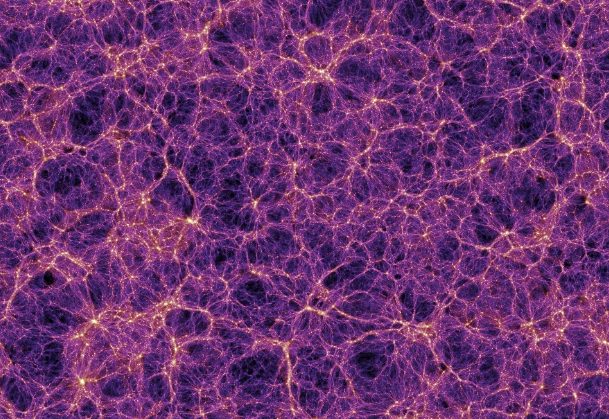Definition: Moonshine - foolish talk or thought.
The Discovery
This entry is about something very strange. Something that does not only defy intuition but also leaves scientists pondering. Should something like this really exist? When the mathematician Bernd Fischer started theorizing the existence of the monster most of his colleagues didn't pay it too much attention. “It’s just a theory, in theory, everything is possible”. Or so they thought.
The year is 1973. John Conway is currently a professor at the University of Cambridge and is studying group theory and modular functions. As he got older he mostly pursued what he found interesting, not caring much about leaving behind a legacy or recognition. And so murmurs of this so called monster caught his attention.
But it wasn't until 6 yers late in 1979 when the brilliant Robert Griess after several months of non-stop working managed to show the monster existed for real by calculating its character table, that the entirety of Cambridge was set into a frenzy. Nobody could explain the discovery. This has not changed to this day. But what exactly is this “monster”? In order to understand the absurdity of its existence we must first explore one of the most fundamental properties of reality.
Symmetries
Symmetry is a fundamental aspect of nature and mathematics. From the alignment of a butterfly’s wings to the structure of a snowflake, symmetry appears everywhere. To study these patterns in a precise way, we use group theory, a branch of mathematics that analyzes symmetries through groups. Groups are sets of objects or transformations that follow specific rules. Group theory provides a systematic framework for understanding symmetry in both abstract theory and real-world applications.
These rules dictate how elements within the group combine or transform, acting as a blueprint for symmetrical objects. For example, if you look at an equilateral triangle, you can find that there are certain transformations or actions you can perform on it that leave it looking the same. One example would be to rotate it by 120 degrees. Or to flip it across its axis. These are examples of symmetries.

Example of 120° rotational symmetry: The shape looks the same
The Monstrous Moonshine
So we could say the symmetry group of a geometric object is the group of all transformations under which the object is invariant. The landscape of group theory is vast and begs the following question. If groups describe symmetries, then what are all the ways something can be symmetric? This incredibly difficult question has been answered after over 50 years of research, 100s of mathematicians and more than 10 000 pages of proof.
It turns out there are finite and infinite groups. 18 infinite families of simple groups that describe symmetries like for example the ones from a circle. A circle can be understood as a polygon with infinite edges. And the finite groups that intern can be broken down into 26 simple groups that are called sporadic groups named after their sporadic discoveries. They act in a sense as the atoms of symmetry.
The 26 sporadic groups are already very unique due to not being infinite. John Conway named the largest one the monster group and the second largest the baby monster. So how large is this monster? Very large. To be precise it has 808,017,424,794,512 ,875,886,459,904,961,710,757,005 ,754,368,000,000,000 symmetries. In fact it is so big, that it contains 19 other sporadic groups as subquotients. These 20 groups are sometimes referred to as the happy family.

The monster and its children
And you might ask yourself if one can visualize it similar to the triangle and its rotations. But the objects that this group describes live in 196,883-dimensional space. Yet, the fact that this arbitrary number is apparently the limit of our atoms of symmetry is truly baffling. But the mystery doesn't stop there...
In 1978, 5 years after the first hints of the monster's existance, a mathematician named John Mckay stumbled upon a peculiar situation. He was studying the J function, a modular function of significant importance in number theory. He noticed that the number of the monster's dimensions appeared in the Fourier expansion of the J function, in a completely different area of math.

And not just once at that, they kept repeating. Once again mathematicians were baffled. Conway and Norton affectionately named this phenomenon moonshine and proposed that it might be generalizable to all other sporadic groups.
The Fourrier coefficients in this case were linear combinations of the dimensions of the irreducible representation of the monster group. A fascinating realization.
After decades of research, a third really strange occurrence finally shed some light on this situation. Mathematical tools from another distant field came to the rescue. The breakthrough came in 1992 when Richard Borcherds, utilizing concepts from string theory and vertex operator algebras, proved the conjectures by Conway and Norton. "I was over the moon when I proved the moonshine conjecture” he said. As the pieces of this mathematical puzzle fell into place, the so called moonshine module emerged as the key to deciphering the mysterious connection between the monster group M and modular functions.
The Monstrous Legacy
Monstrous moonshine's impact on the mathematical community cannot be understated. As it sent mathematicians into a scavenger hunt it provided a glimpse into the connections between very distant areas of mathematics, combining algebraic structures with complex analysis and geometry.
And the story is not over as the next strange coincidence is already at the doorstep. It turns out the monster group might even be connected to quantum gravity. However, this story is still waiting to be written.




